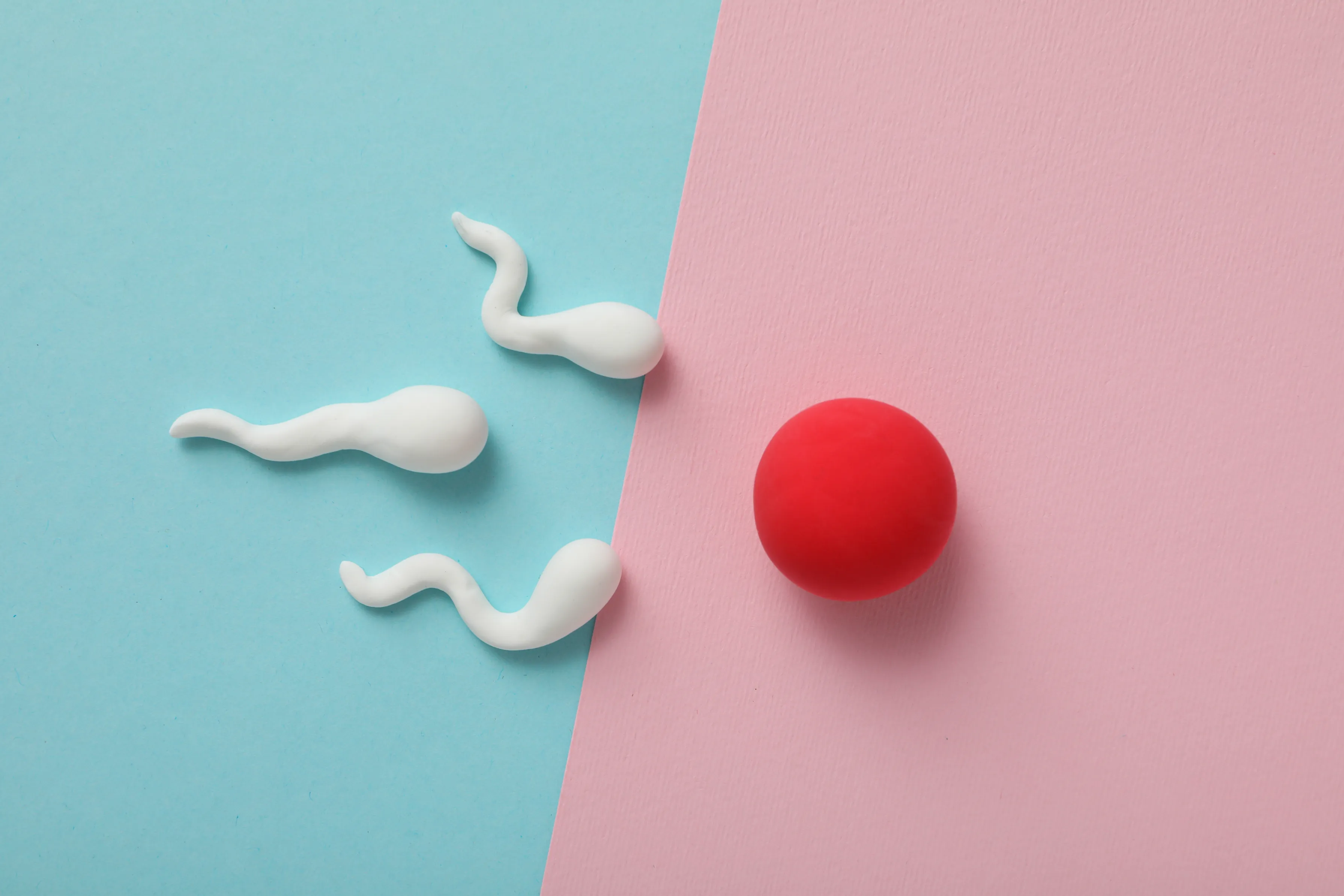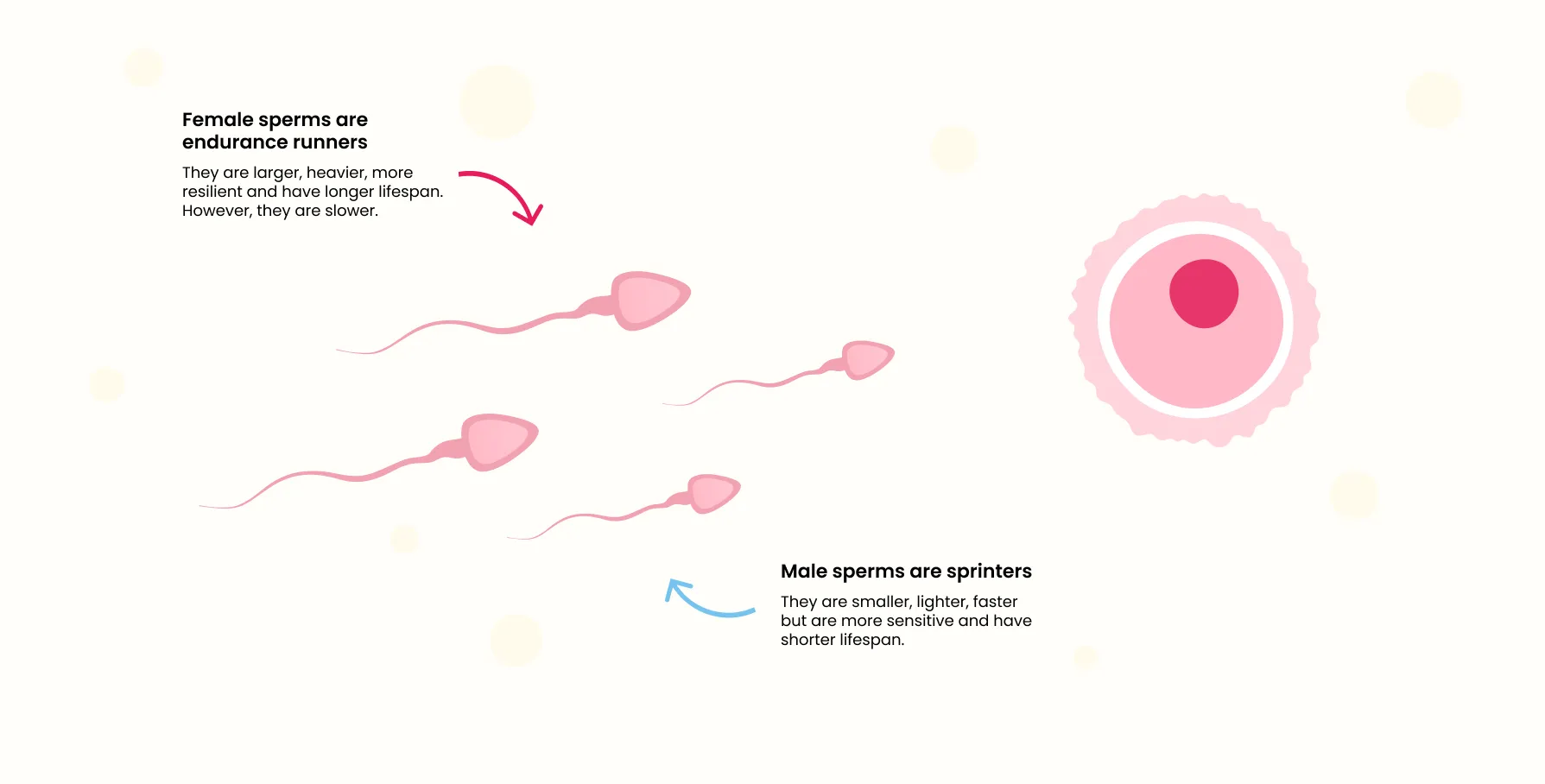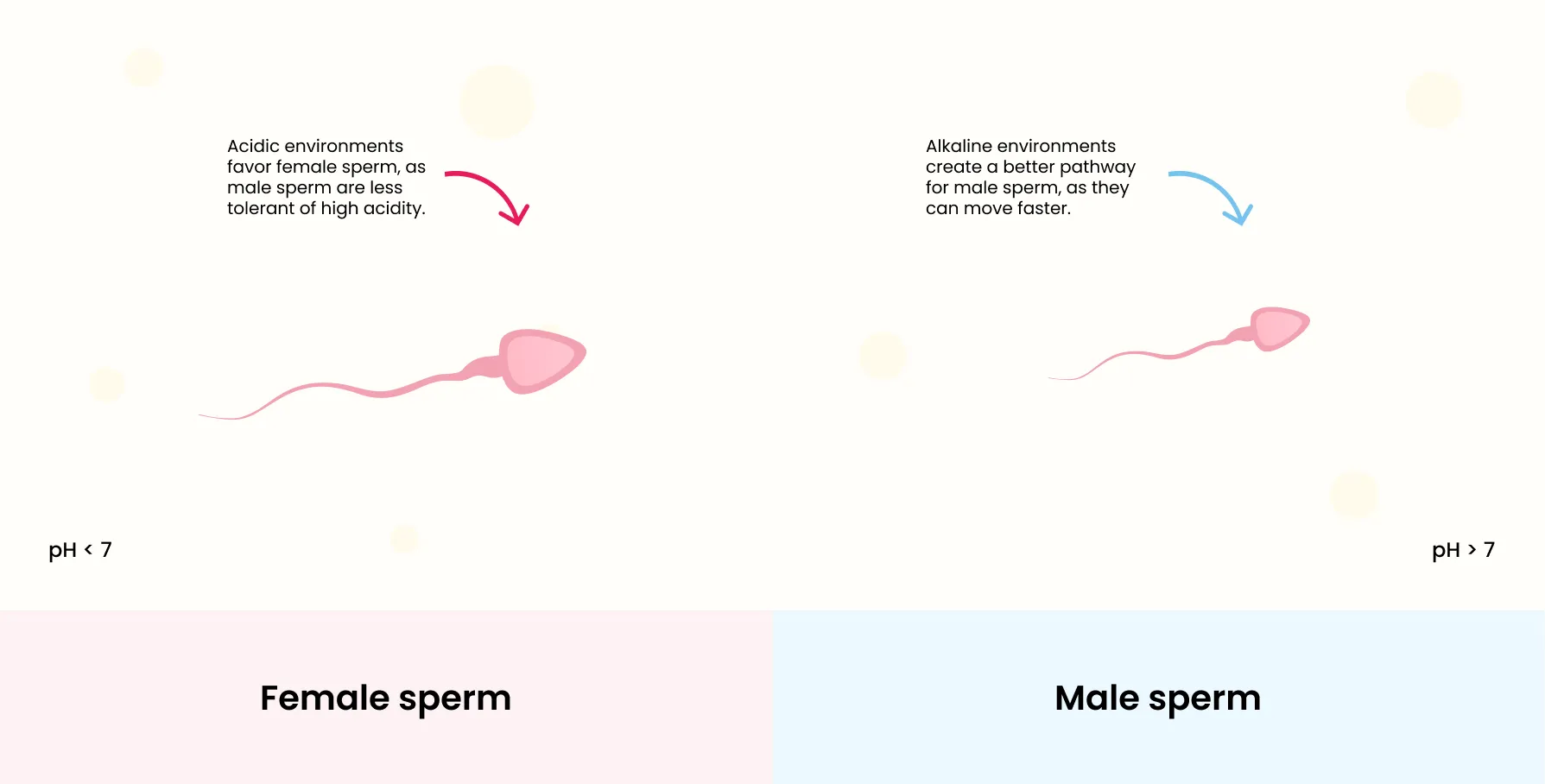What is the difference between male sperm and female sperm?

The process of conception is nothing short of a miracle of nature, yet understanding the science behind it can provide fascinating insights, especially when it comes to the differences between male (XY) and female (XX) sperm. These tiny yet powerful cells hold the key to determining the sex of your baby, and their unique characteristics play a pivotal role in the journey to conception, as explored in studies such as Kim et al., 2017.
The Basics of Sperm
Sperm are the male reproductive cells, and each sperm cell carries either an X chromosome (female) or a Y chromosome (male). When a sperm cell fertilizes an egg, the combination of chromosomes determines the baby’s sex:
- An X chromosome from the sperm combines with the X chromosome from the egg, resulting in a female (XX).
- A Y chromosome from the sperm combines with the X chromosome from the egg, resulting in a male (XY).
But what sets male and female sperm apart from one another? Let’s dive deeper into their differences.
Male Sperm (Y Chromosome)
Male sperm are often described as the sprinters of the reproductive world. They are:
- Smaller and lighter: This gives them the advantage of speed, allowing them to move faster.
- Shorter-lived: While quick, male sperm have a shorter lifespan and are more susceptible to environmental conditions such as acidity.
- More sensitive: They are less resilient in less-than-ideal conditions, making the timing of intercourse critical for their success.
Female Sperm (X Chromosome)
Female sperm, in contrast, are the endurance runners. They are:
- Larger and heavier: This makes them slower but more stable in their movement.
- Longer-lived: Female sperm can survive in the reproductive tract for up to five days, especially in acidic conditions.
- More resilient: Their robust structure allows them to thrive in environments that may be less favorable for male sperm.

The Role of the Reproductive Environment
The differences between male and female sperm mean that the reproductive environment plays a crucial role in their survival and success. Factors such as pH levels, timing of intercourse, and dietary habits can influence which type of sperm is more likely to reach and fertilize the egg.
- Acidic environments favor female sperm, as male sperm are less tolerant of high acidity.
- Alkaline environments create a better pathway for male sperm, as they can move faster in less acidic conditions.
Practical Implications for Conception
Understanding the distinctions between male and female sperm can be helpful for couples hoping to increase their chances of conceiving a boy or a girl. For example:
- To conceive a boy, timing intercourse closer to ovulation and maintaining an alkaline environment may be advantageous.
- To conceive a girl, having intercourse a few days before ovulation and fostering a slightly acidic environment can increase the likelihood.

While no method guarantees success, knowledge of these differences can provide a natural and informed approach to family planning.
This is where NATANEO comes in - a unique app designed to guide couples through this process. It’s important to note that NATANEO doesn’t increase the chances of conception itself but focuses specifically on increasing the odds of conceiving a baby of a desired gender. By combining precise timing, tailored dietary adjustments, and supportive activities, NATANEO offers a personalized, step-by-step plan to help couples create an optimal environment for the desired sperm to succeed.
With NATANEO, the journey towards achieving your dream family becomes more informed, structured, and empowering, giving you the confidence to approach this incredible milestone naturally.
Conclusion
The unique qualities of male and female sperm showcase the incredible complexity of human reproduction. Whether you’re simply curious or looking to plan your family, understanding these distinctions can provide valuable insights into the journey of conception. At the end of the day, the magic of life is in its unpredictability, and every child – boy or girl – is a wonderful gift.
Phrases to Keep in Mind:
- What is the difference between male sperm and female sperm
- Male sperm (Y chromosome) characteristics
- Female sperm (X chromosome) characteristics
- Differences between XY and XX sperm
- Male sperm vs. female sperm
- How sperm determine baby’s gender
- Sperm and reproductive environment
- Acidic vs. alkaline conditions for sperm
- Family planning based on sperm characteristics
- Natural gender selection